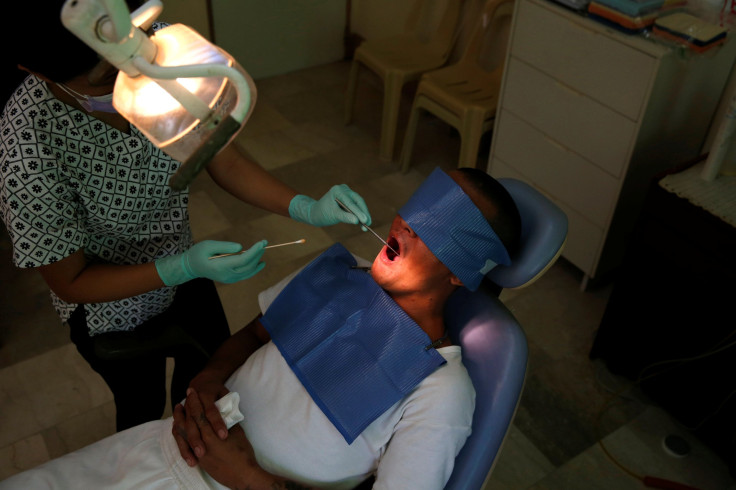Excessive Oral Sex Causes Mysterious Red Circles To Form Inside Man's Mouth

Too much oral sex left a man with a circle-shaped wound on the roof of his mouth. In a report Tuesday, dentists in Mexico said a man developed lesion, known as an erythema, after giving oral sex.
The 47-year-old visited a dentist after noticing a filling in his tooth was cracked. The dentists who examined the man noticed a “circular-shaped lesion” on his soft palate.
The man said he did not know the lesion and said it had not caused him pain. Initially the dentists were confused as to what might have happened to the patient, but after taking his full history they learnt he had in the past taken marijuana and cocaine, and was sexually active with men.
He also told the dentists his last oral sex with someone was three days before his appointment. Following the information, dentists concluded his lesion was caused by oral sex.
“The contact of the palate with the penile glands may cause a hematoma due to blunt trauma and dilatation of the blood vessels because of the negative pressure created while sucking,” Dr. Luis Alberto Mendez, who treated the patient, wrote in the report. “With this information, we concluded that the erythema on the soft palate was associated with the practice of oral sex.”
Thankfully the lesions disappeared on their own, but dentists advised him not to get involved in oral sex for a few days. After 15 days, the lesions had completely gone and the man was able to resume his sex life.
Injuries due to oral sex are rare but this was not the first time such a case came to doctors.
According to the New York Post, a study of 132 sex workers in Peru found 17 of the participants suffered lesions in the mouth due to oral sex.
“It is pertinent to consider this practice [oral sex] as a potential cause of oral lesions, particularly on the palate,” Mendez added. “It is important to obtain a comprehensive history and a detailed oral examination... In high-risk patients, we should consider the possibility of sexually transmitted disease.
“As health care professionals, it is our responsibility to provide counseling and reassurance to all patients presenting with these lesions, particularly those undertaking high-risk sexual behavior.”
© Copyright IBTimes 2025. All rights reserved.




















